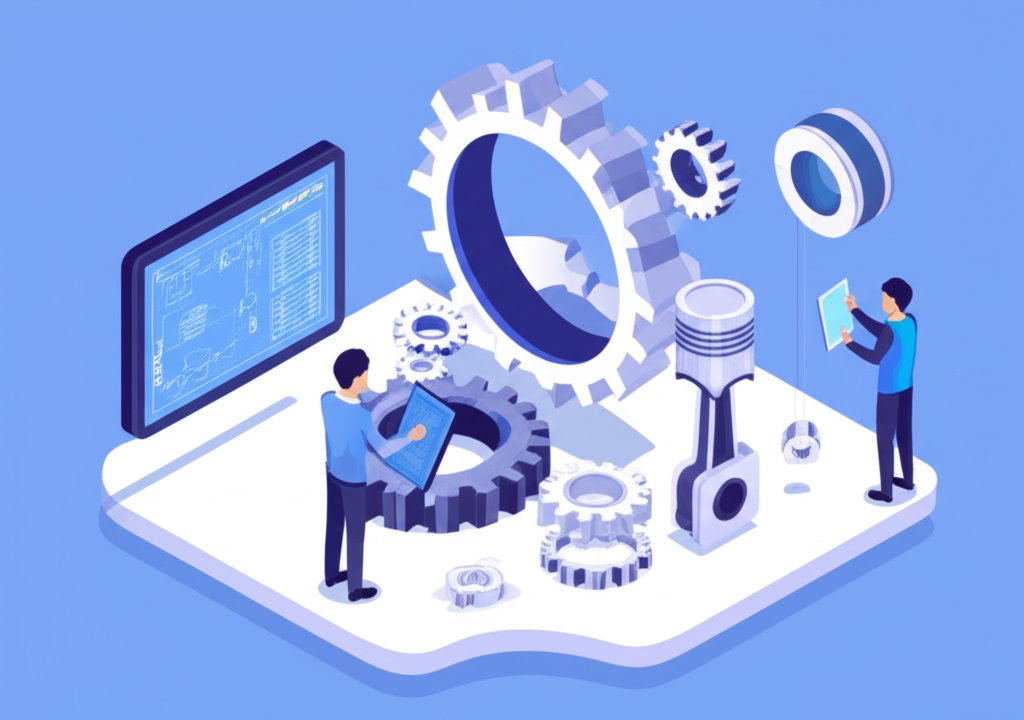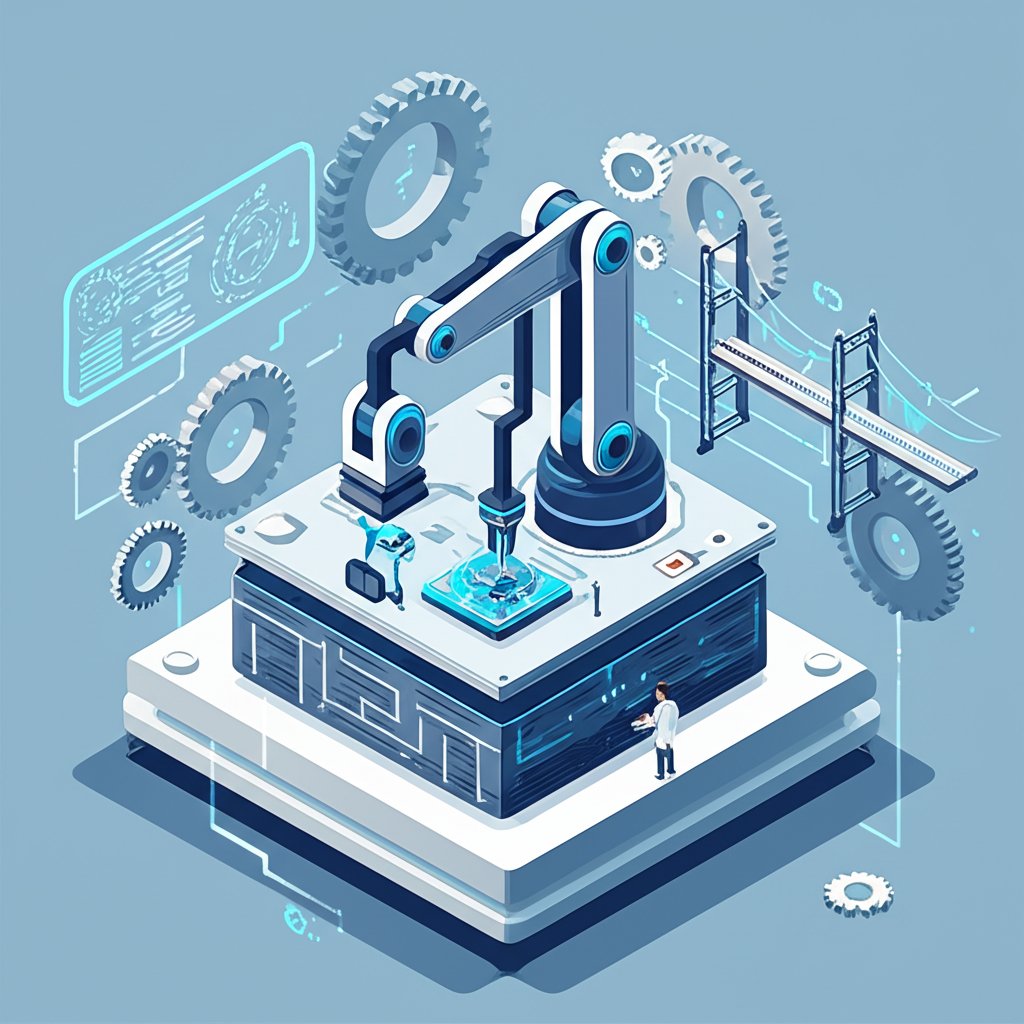Ever wondered about the hidden mechanisms that power our world, from the simplest tools to the most complex spacecraft? Our fascination with how things work, and the intricate science behind every piece of modern technology, is at the heart of mechanical engineering. This dynamic field is a constant stream of ingenuity, where groundbreaking ideas flourish and unexpected discoveries reshape our daily lives. Prepare to uncover captivating mechanical engineering tidbits that will forever change your perspective on this vital discipline, celebrating the brilliance behind the world’s most incredible mechanical devices and the relentless drive for mechanical engineering innovation.
The Foundations of Mechanical Engineering: From Antiquity to Industry
Mechanical engineering is not a new discipline; its roots stretch back through millennia, testament to humanity’s enduring quest to understand and control the physical world. From ancient marvels to the engines that fueled revolutions, its evolution is a story of continuous problem-solving and inventive genius.
Ancient Ingenuity: Early Mechanical Devices
Long before the advent of digital design, early civilizations engineered incredibly sophisticated mechanical devices using only basic principles and raw materials. One of the most famous examples is Archimedes’ Screw, designed in the 3rd century BCE to lift water for irrigation. This simple yet effective device demonstrates fundamental mechanical principles: rotational motion translating into linear movement for fluid transport.
Another astonishing piece of ancient mechanical engineering is the Antikythera Mechanism, an ancient Greek analog computer discovered in a shipwreck. Dating back to the 2nd century BCE, this intricate assembly of bronze gears predicted astronomical positions and eclipses with remarkable precision. It stands as a powerful testament to the advanced understanding of gear trains and complex mechanics possessed by engineers of antiquity, proving that the drive for mechanical engineering innovation is ancient.
The Industrial Revolution and The Rise of Mechanical Engineering
The late 18th century marked a pivotal moment for mechanical engineering with the dawn of the Industrial Revolution. This era was fundamentally reshaped by mechanical devices that harnessed new sources of power. James Watt’s improved steam engine, a true marvel of its time, transformed industry by providing a reliable and efficient power source, dramatically increasing productivity in factories and powering early locomotives and ships. Watt’s invention of the parallel motion mechanism was particularly ingenious, as it allowed the piston rod to move in a straight line, dramatically improving the efficiency and reliability of his steam engines. This seemingly small refinement had a monumental impact, serving as a critical mechanical engineering tidbit that propelled the entire Industrial Revolution forward.
The increasing complexity of these new mechanical devices and the systems they powered necessitated a more formalized approach to their design, analysis, and manufacture. This led to the establishment of mechanical engineering as a distinct academic discipline. In a significant historical mechanical engineering tidbit, the University of Glasgow established the world’s first formal mechanical engineering degree program in 1840, solidifying the field’s academic standing and paving the way for structured education and research in mechanical sciences across the globe.
Unpacking Mechanical Engineering Tidbits: Fascinating Discoveries and Breakthroughs
Beyond the grand narratives, mechanical engineering is rich with smaller, often overlooked, yet equally fascinating insights and discoveries that highlight the sheer ingenuity of the field.
The Unsung Heroes: Simple Mechanisms, Profound Impact
While our attention is often drawn to colossal machines, many of the most profound mechanical engineering innovation comes from the mastery of simple mechanical devices. Take the ubiquitous screw, for example. Its helical inclined plane translates rotational force into linear motion, enabling it to fasten components securely or act as a powerful lifting mechanism. From holding together consumer electronics to operating heavy machinery, screws are indeed the unsung heroes, delivering stability and resilience across countless applications.
Beyond screws, levers, pulleys, and gears form the bedrock of almost every complex system. Levers multiply force, pulleys change the direction of force and reduce effort, and gears transmit power and change speed or torque. Understanding these fundamental mechanical engineering tidbits reveals how seemingly simple components are meticulously combined to achieve incredible feats of engineering. Without them, the intricate ballet of parts within a car engine or the precision of a robotic arm would be impossible.
Pioneers of the Field: Leonardo da Vinci and Beyond
When we think of pioneers in mechanical engineering, one name often stands out: Leonardo da Vinci. While celebrated as an artist, his notebooks are filled with brilliant sketches and detailed designs for cutting-edge mechanical devices centuries ahead of their time. From flying machines and parachutes to armored vehicles, robotic knights, and complex gear mechanisms, Da Vinci’s work embodies the spirit of mechanical engineering innovation. His analytical approach to understanding mechanics laid a crucial foundation for future generations, making him a true visionary and a fascinating mechanical engineering tidbit in the field’s history.
Many other figures have contributed to the rich tapestry of mechanical engineering throughout history. Visionaries like Nikola Tesla, whose work on alternating current systems fundamentally changed power transmission, and George Westinghouse, who pioneered the air brake system for trains, demonstrate how diverse fields benefit from mechanical expertise. These innovators pushed the boundaries of what was thought possible, transforming their ideas into tangible mechanical devices that shaped the modern technology landscape.
Material Science Innovation: Shaping Stronger, Lighter, Smarter Structures
A significant driver of mechanical engineering innovation is the continuous advancement in material science. Mechanical engineers are constantly seeking materials that are stronger, lighter, more durable, or possess novel properties to meet the demands of modern technology.
Composites, for instance, such as carbon fiber reinforced polymers, offer incredible strength-to-weight ratios, making them indispensable in aerospace, automotive, and sporting goods industries. The use of these materials allows for the design of more fuel-efficient aircraft and faster vehicles, directly impacting the performance of mechanical devices.
The development of smart materials is another exciting area. These materials can react to external stimuli like temperature, electricity, or light, changing their properties in predictable ways. Examples include shape memory alloys, which can return to a predefined shape after deformation, and piezoelectric materials, which convert mechanical stress into electrical energy and vice-versa. These materials open doors for self-healing structures, adaptive mechanical devices, and more efficient sensors, pushing the boundaries of what mechanical engineering can achieve.
Furthermore, the growing emphasis on sustainability is driving innovation in eco-friendly materials. Mechanical engineers are now exploring biodegradable polymers, recycled composites, and lightweight alloys that reduce environmental impact throughout a product’s lifecycle. This commitment to sustainable mechanical engineering ensures that modern technology develops responsibly, contributing to a more resilient and eco-conscious future.
Mechanical Engineering Innovation: Driving Modern Technology Forward

Today’s mechanical engineering sits at the forefront of modern technology, constantly pushing boundaries and integrating with other disciplines to create intelligent, efficient, and interconnected systems. This synergy is revolutionizing industries and everyday life.
Automation and Robotics: The Era of Smart Mechanical Devices
One of the most visible forms of mechanical engineering innovation is in the field of automation and robotics. Modern industrial robots are intricate mechanical devices precisely engineered to perform repetitive or complex tasks with unparalleled accuracy and speed. From manufacturing assembly lines to delicate surgical procedures, these robots enhance productivity, improve safety, and open up possibilities for complex operations that would be impossible for humans.
Beyond traditional industrial robots, the emergence of collaborative robots (cobots) represents a significant leap. Designed to work alongside humans, cobots are outfitted with advanced sensors and safety features, making them adaptable and user-friendly. The design of these smart mechanical devices requires a deep understanding of kinematics, dynamics, and human-machine interaction, highlighting the core role of mechanical engineering.
The integration of Artificial Intelligence (AI) further elevates the capabilities of these mechanical devices. AI algorithms enable robots to learn from their environment, adapt to changing conditions, and make autonomous decisions, turning complex machinery into truly intelligent systems. This convergence of mechanical engineering, electronics, and computer science is defining the next generation of automation.
The Internet of Things (IoT) in Mechanical Systems
The Internet of Things (IoT) is profoundly transforming mechanical engineering by connecting physical mechanical devices to the digital world. Through embedded sensors, software, and other technologies, these devices can collect and exchange data over the internet, leading to unprecedented levels of monitoring and control.
For example, in manufacturing, mechanical devices on a factory floor connected via IoT can provide real-time data on performance, temperature, and wear. This enables predictive maintenance, where potential failures are identified before they occur, drastically reducing downtime and increasing operational efficiency. This proactive approach saves costs and enhances reliability, making factories smarter and more productive.
In consumer products, IoT-enabled mechanical devices range from smart thermostats that optimize energy consumption to sophisticated home appliances that can be controlled remotely. This integration means that traditional mechanical systems are no longer isolated but are now part of a larger, interconnected ecosystem, showcasing how mechanical engineering is adapting to the demands of modern technology.
Additive Manufacturing (3D Printing): Revolutionizing Design and Production
Additive manufacturing, more commonly known as 3D printing, is a revolutionary mechanical engineering innovation that has reshaped how mechanical devices are designed and produced. Instead of traditional subtractive methods (removing material from a block), 3D printing builds objects layer by layer from a digital design.
This technology allows engineers to create incredibly complex geometries that were previously impossible to manufacture, optimize part designs for weight and strength, and rapidly prototype new ideas. It has significantly accelerated the design-to-production cycle, offering unprecedented flexibility and customization. From aerospace engine components with intricate internal cooling channels to custom medical implants perfectly tailored to a patient’s anatomy, 3D printing is expanding the horizons of mechanical engineering. It also supports sustainable practices by reducing material waste and enabling on-demand production, further integrating modern technology with environmental responsibility.
The Diverse World of Mechanical Devices: Everyday to Extraordinary

The impact of mechanical engineering is so pervasive that it touches almost every aspect of modern technology, from the mundane objects we use daily to the groundbreaking systems that explore space.
Powering Our Lives: Energy Systems and Mechanical Engineering
Mechanical engineers are at the core of designing, developing, and maintaining the energy infrastructure that powers our homes, industries, and transportation. This involves a vast array of mechanical devices and systems:
- Turbines: Whether in hydroelectric dams, wind farms, or thermal power plants, turbines convert the energy of moving fluids (water, air, steam, gas) into rotational mechanical energy, which then drives generators to produce electricity.
Mechanical engineering innovationis critical in making these highly efficient. - Engines: From the internal combustion engines in our cars to the jet engines propelling aircraft, mechanical engineers design and optimize these complex
mechanical devicesfor performance, fuel efficiency, and emissions control. The shift towards electric and hydrogen-powered vehicles also relies heavily on mechanical engineers for battery packaging, thermal management, and drivetrain design. - Renewable Energy Systems: The development of solar tracking systems, geothermal heat pumps, and advanced energy storage solutions all fall under the purview of
mechanical engineering, demonstrating its vital role in creating sustainable energy landscapes and combating climate change.
Biomedical Mechanical Devices: Enhancing Health and Quality of Life
The synergy between mechanical engineering and medicine has led to a proliferation of mechanical devices that transform healthcare and improve human well-being. This specialized field, often known as biomedical engineering, leverages mechanical principles to address biological and medical challenges.
- Prosthetics and Orthotics: Mechanical engineers design advanced artificial limbs and supportive braces that restore mobility and function to individuals.
Mechanical engineering innovationin materials, kinematics, and control systems has led to prosthetics that are increasingly lifelike, sensitive, and responsive. - Surgical Tools and Robotics: Precision surgical instruments, including those used in minimally invasive surgery, are meticulously designed by mechanical engineers. Robotic surgical systems, like the Da Vinci Surgical System, combine mechanical precision with human control, enabling surgeons to perform complex procedures with greater accuracy and less invasiveness.
- Implantable Devices: From pacemakers and artificial joints to drug delivery systems, mechanical engineers are crucial in developing biocompatible
mechanical devicesthat can function effectively within the human body for extended periods, directly impacting longevity and quality of life.
Aerospace and Automotive: Pushing Boundaries of Motion
Few fields showcase mechanical engineering innovation more dramatically than aerospace and automotive industries, where the stakes of performance and safety are incredibly high.
- Aircraft Design: Every aspect of an aircraft, from the aerodynamics of its wings and fuselage to the structural integrity of its components and the intricate mechanisms of its landing gear, is the domain of
mechanical engineering. The continuous drive for lighter, stronger, and more fuel-efficient designs is a testament to ongoingmechanical engineering innovation. - Spacecraft and Satellites: Designing
mechanical devicescapable of withstanding the extreme conditions of space, performing complex maneuvers, and deploying delicate instruments requires extraordinary mechanical expertise. From rocket engines to robotic exploration vehicles, mechanical engineers enable humanity’s reach beyond Earth. - Automotive Engineering: Beyond the engines, mechanical engineers design vehicle chassis, suspension systems, braking mechanisms, and safety features. The rise of autonomous vehicles presents new
mechanical engineeringchallenges, including the integration of sensors, the design of fail-safe steering and braking systems, and the optimization of vehicle dynamics for driverless operation. These advancements are key to the evolution ofmodern technologyin transportation.
Staying Ahead: Lifelong Learning in Mechanical Engineering and Future Trends
The world of mechanical engineering is in constant flux, driven by relentless mechanical engineering innovation and the rapid evolution of modern technology. To remain at the forefront, mechanical engineers embrace a culture of lifelong learning and adaptation.
Industry 4.0 and Beyond: Integrating Cyber-Physical Systems
Industry 4.0 represents the fourth industrial revolution, characterized by the integration of cyber-physical systems, the Internet of Things (IoT), cloud computing, and artificial intelligence into manufacturing processes. For mechanical engineering, this means designing:
- Smart Factories: Where machines, components, and products communicate with each other, making autonomous decisions and optimizing production in real-time.
- Digital Twins: Virtual replicas of physical
mechanical devicesor systems that allow engineers to monitor, analyze, and simulate performance in a dynamic environment, predicting failures and optimizing maintenance schedules without physical intervention. - Augmented Reality (AR) and Virtual Reality (VR): Used for design visualization, training, and maintenance, offering immersive experiences that enhance understanding and efficiency in complex
mechanical engineeringtasks.
Looking ahead, Industry 5.0 is emerging, focusing on bringing humans back into the loop alongside intelligent machines, emphasizing collaboration, personalization, and sustainability. Mechanical engineering will be crucial in designing human-centric automation and resilient, adaptable systems.
The Importance of Continuous Learning and Adaptation
Given the rapid pace of mechanical engineering innovation, staying updated is not merely beneficial but essential. Mechanical engineers regularly engage in:
- Technical Conferences and Seminars: To learn about the latest research, technologies, and industry best practices.
- Online Courses and Certifications: To acquire new skills in areas like simulation software, data analytics, robotics, or advanced materials.
- Professional Organizations: Membership in engineering societies (e.g., ASME, IMechE) provides networking opportunities, access to journals, and continuous professional development resources.
This commitment to lifelong learning ensures that engineers can tackle difficult problems and contribute meaningfully to the ongoing search for mechanical engineering innovation, keeping pace with the demands of modern technology.
Sustainable Engineering: Designing for a Better Tomorrow
As global challenges like climate change and resource depletion intensify, mechanical engineering is increasingly focused on sustainable engineering principles. This involves designing mechanical devices and systems that minimize environmental impact throughout their lifecycle—from raw material extraction to manufacturing, operation, and disposal.
Key areas include:
- Energy Efficiency: Developing highly efficient engines, HVAC systems, and renewable energy technologies.
- Waste Reduction: Designing products for durability, repairability, and recyclability, promoting a circular economy.
- Material Selection: Prioritizing eco-friendly, recycled, and biodegradable materials.
Mechanical engineers are playing a critical role in developing solutions for a more sustainable future, embedding environmental responsibility into the very fabric of mechanical engineering innovation. This commitment ensures that modern technology serves humanity without compromising the planet.
Conclusion
From the ingenious water-lifting mechanisms of ancient civilizations to the intricate robotics and smart systems of today, mechanical engineering stands as a testament to human creativity and problem-solving. This field, rich with fascinating mechanical engineering tidbits, has consistently shaped our world, driving the development of countless mechanical devices that underpin every facet of modern technology.
The relentless pursuit of mechanical engineering innovation continues to push boundaries, integrating with AI, IoT, and advanced materials to create a future that is more efficient, sustainable, and interconnected. Mechanical engineers are the architects of motion, the designers of power, and the innovators who breathe life into ideas, making the seemingly impossible a tangible reality.
As we continue to navigate a world increasingly reliant on sophisticated systems, the ingenuity of mechanical engineering remains indispensable. Its journey from simple levers to intelligent machines is a captivating story of progress, demonstrating that the human spirit of invention knows no bounds. The next great marvel is always just around the corner, waiting for a mechanical engineer to bring it to life.
FAQ
Q: What is mechanical engineering?
A: Mechanical engineering is a broad discipline that involves the design, analysis, manufacturing, and maintenance of mechanical systems. It applies principles of physics, mathematics, and material science to design and build mechanical devices, tools, and machines.
Q: What are some important historical mechanical engineering tidbits?
A: Fascinating mechanical engineering tidbits include the Antikythera Mechanism, an ancient Greek analog computer; James Watt’s parallel motion, which significantly improved steam engine efficiency; and the establishment of the world’s first formal mechanical engineering degree program at the University of Glasgow in 1840.
Q: How has mechanical engineering innovation contributed to modern technology?
A: Mechanical engineering innovation is central to modern technology. It drives advancements in automation and robotics, integrates physical mechanical devices with the Internet of Things (IoT), and enables revolutionary manufacturing processes like 3D printing, shaping fields from aerospace to biomedicine.
Q: Can you give examples of mechanical devices in everyday life?
A: Mechanical devices are ubiquitous, ranging from simple tools like screws and levers to complex systems such as car engines, washing machines, bicycles, elevators, and even the internal mechanisms of our phones and computers.
Q: What is Industry 4.0 in the context of mechanical engineering?
A: Industry 4.0, or the Fourth Industrial Revolution, is a trend in mechanical engineering that focuses on data exchange, automation, and smart manufacturing technologies like the Internet of Things (IoT), artificial intelligence, and cyber-physical systems to create interconnected and intelligent production processes.
Q: How do mechanical engineers stay current with modern technology and mechanical engineering innovation?
A: Mechanical engineers engage in lifelong learning by attending technical conferences and seminars, pursuing online courses and certifications, conducting individual research, and participating in professional organizations to stay abreast of the latest modern technology and mechanical engineering innovation.
Q: Who is often considered a pioneer in mechanical engineering?
A: Leonardo da Vinci is often considered a pioneer in mechanical engineering due to his brilliant sketches and designs of cutting-edge mechanical devices and systems centuries ahead of their time.










